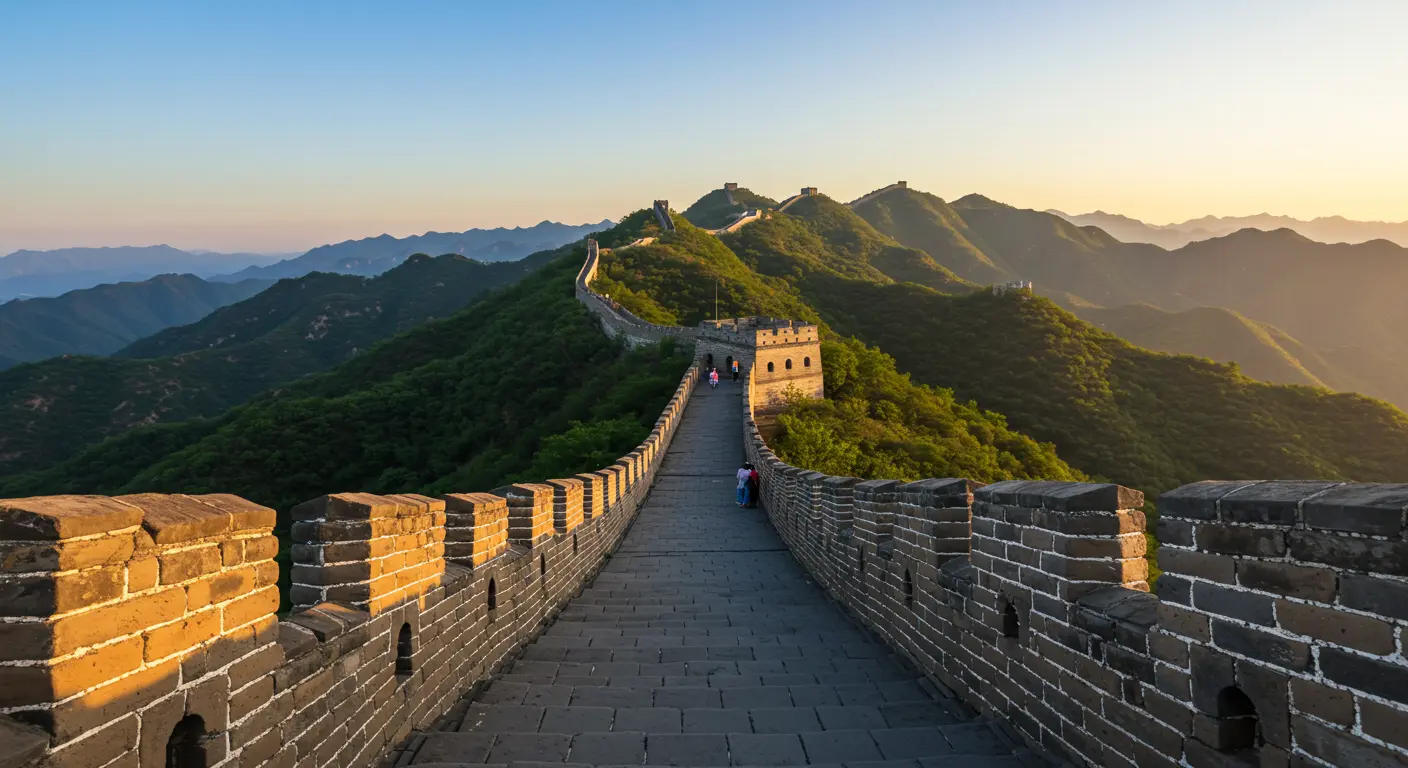Table of Contents
Let’s be honest. The idea of a vacation in China can feel… massive. It’s not just a country; it’s a civilization with thousands of years of history, a landmass that spans continents, and a culture that’s both profoundly ancient and dizzyingly modern. Where do you even start?
If your mind is spinning with questions about visas, language barriers, and whether you can just Google your way through the Great Wall, take a deep breath. You’re not alone. Every seasoned traveler to China was once a beginner, staring at a map and wondering how to tackle it all.
This guide is here to change that. We’re going to strip away the overwhelm and break down your first China vacation into simple, actionable steps. By the end, you’ll feel confident and excited, ready to book the trip of a lifetime.
Start Here: The Non-Negotiable Basics
Before you dream of pandas and Peking duck, there are a few essentials you must lock down. Getting these right from the start sets the foundation for a stress-free adventure.
The Golden Ticket: Your Chinese Tourist Visa (L-Visa)
For most nationalities, this is your first and most important step. You can’t just show up at the border.
- When to Apply: Start the process 1-2 months before your trip. Don’t leave it last minute!
- The Process: You’ll need to apply through a Chinese Visa Application Service Center (CVASC) in your country, often in person. The requirements are strict: a passport with blank pages and at least six months of validity, a completed form, a recent photo, and proof of your travel plans (like flight and hotel bookings).
- Pro Tip: Double and triple-check your application. A small mistake can mean delays or rejection. I once had a friend transpose two digits on his flight number and had to reschedule his entire appointment—a headache you don’t need.
When to Go: Timing is Everything
China’s size means it has wildly different climates. Generally, the best times to visit are:
- Spring (April-May): Pleasant temperatures and blooming flowers. A classic choice.
- Autumn (September-October): Clear skies, mild weather, and perfect for hiking and being outdoors.
I made the mistake of visiting Beijing in July once. The sights were incredible, but the heat and humidity were… character-building, let’s say. Meanwhile, traveling during the Chinese National Holiday (first week of October) means sharing every landmark with about a billion domestic tourists. If you can, avoid it.
Crafting Your China Itinerary: A Beginner-Friendly Approach
Trying to see “all of China” in one trip is a recipe for exhaustion. For your first visit, focus on one or two key regions. Here are two classic routes:
Route 1: The Historical Heartland (Beijing & Xi’an)
This is the quintessential first-timer’s circuit, offering two of history’s greatest hits.
- Beijing (3-4 days): The modern capital steeped in imperial history.
- Must-Dos: Walk the Great Wall (choose a restored section like Mutianyu for accessibility or Jinshanling for a more rugged experience). Explore the vast Forbidden City, and wander through the Temple of Heaven Park where locals practice tai chi and dance.
- Local Experience: Get lost in the hutongs (ancient alleyways) and sample some succulent Peking Duck.
- Xi’an (2-3 days): The eastern terminus of the Silk Road.
- The Main Event: The Terracotta Army. Nothing prepares you for the scale of seeing thousands of life-sized soldiers, each with a unique face, standing in battle formation for over 2,000 years. It’s a genuine world wonder.
- Don’t Miss: Cycle on the immense City Wall and explore the vibrant Muslim Quarter at night for incredible street food.
Route 2: The Modern Metropolis & Scenic Beauty (Shanghai & Guilin)
Prefer a mix of dazzling cityscapes and jaw-dropping nature? This route is for you.
- Shanghai (2-3 days): A dazzling look into China’s hyper-speed future.
- Must-Dos: Stroll along The Bund with its colonial-era architecture, gaze across the river at the futuristic skyscrapers of Pudong, and explore the traditional Yu Garden and bazaar.
- The Vibe: Shanghai feels more international and fast-paced. It’s a fantastic place for world-class dining and shopping.
- Guilin & Yangshuo (3-4 days): The landscape you see on every classic Chinese postcard.
- The Experience: Take a Li River cruise from Guilin to Yangshuo. You’ll drift past those iconic karst limestone mountains, seeing water buffalo and fishermen along the way. It’s serene and unbelievably beautiful.
- Getting Active: Rent a bike in Yangshuo and explore the countryside paths. It’s the best way to feel immersed in the scenery.
Navigating the Practicalities: Your On-The-Ground Guide
This is where many first-timers get nervous. But with a little prep, it’s easier than you think.
Getting Around: High-Speed Trains Are Your Best Friend
China’s high-speed rail network is a marvel—clean, efficient, and incredibly punctual. For journeys under 6 hours (e.g., Beijing to Xi’an is about 4.5 hours), it’s almost always better than flying. You arrive in city centers, avoid airport hassle, and get to see the countryside zoom by.
- How to Book: Use the app Trip.com (an international-friendly version of Ctrip). You can book tickets in English with a foreign credit card and pick them up at the station with your passport.
The Digital Wall: Apps You Absolutely Need
Forget Google Maps, Facebook, and WhatsApp. They’re largely blocked in China. Here’s your new essential toolkit:
- VPN (Virtual Private Network): Install this on your phone before you arrive. A VPN allows you to bypass the “Great Firewall” and access your usual websites. Popular options include ExpressVPN and Astrill. But have a backup; they can be finicky.
- WeChat: This is everything. It’s WhatsApp, Facebook, Venmo, and a booking app all in one. While primarily for social connections, it’s good to have.
- Alipay (Tour Pass): This is a game-changer. Alipay’s “Tour Pass” feature allows foreigners to link a credit card and pay for almost everything—from street food vendors to high-end stores and taxis. China is largely a cashless society, and this app is your key to functioning smoothly.
- Maps.Me or Apple Maps: Download offline maps for the cities you’re visiting. They work without a VPN and are reliable for walking directions.
A Note on Language and Culture
Very few people outside major hotels and tourist spots speak English. But don’t panic!
- Use Technology: Google Translate (download the Chinese language pack offline) is your lifeline. Its camera function can translate menus in real-time—magic!
- Be Prepared: Have your hotel’s name and address written in Chinese characters to show a taxi driver.
- Embrace the Pointing: Smile, point, and use gestures. People are generally very helpful and patient with tourists.
The most important cultural tip? Be open-minded. Things will be different—the food, the social norms, the sheer volume of people. That’s not a hurdle; it’s the whole point of going.
FAQs: Your China Vacation Questions, Answered
Q: Is it safe to travel in China?
A: Absolutely. China is statistically one of the safest countries in the world for travelers. Petty crime like pickpocketing exists in crowded areas (as it does anywhere), but violent crime against tourists is extremely rare. You can feel comfortable walking around at night.
Q: What about the food? I’m worried about getting sick.
A: “Beijing Belly” is a possibility, but easily avoided. Stick to busy restaurants where the turnover is high. Eat food that is cooked and served hot. Avoid tap water (including ice in drinks) and stick to sealed bottled water. And be adventurous! The food is one of the best parts of the trip.
Q: How much cash should I carry?
A: Very little. As mentioned, Alipay covers 95% of transactions. Carry some small bills for the occasional small vendor or temple entrance fee, but you won’t need wads of cash.
Q: Can I use my credit card?
A: Major international hotels and some high-end stores will accept Visa/Mastercard, but don’t rely on it. Your primary payment method will be Alipay.
Q: How should I dress?
A. Comfort is key! You’ll be doing a lot of walking. Pack comfortable shoes, layers for changing weather, and a good rain jacket. For visiting temples or mosques, it’s respectful to avoid sleeveless tops and very short shorts.
Your Adventure Awaits
Planning your first China vacation might seem like a daunting project, but it’s one of the most rewarding journeys you’ll ever take. It’s a place that truly has it all: awe-inspiring history, cutting-edge modernity, and landscapes that will leave you speechless.
The minor challenges of logistics and language fade into insignificance the moment you stand on the Great Wall, come face-to-face with a Terracotta Warrior, or drift down the Li River. You’re not just taking a trip; you’re stepping into a living, breathing story thousands of years in the making.
So take the leap. Do your research, get that visa, and book your ticket. China is waiting to leave its mark on you.




